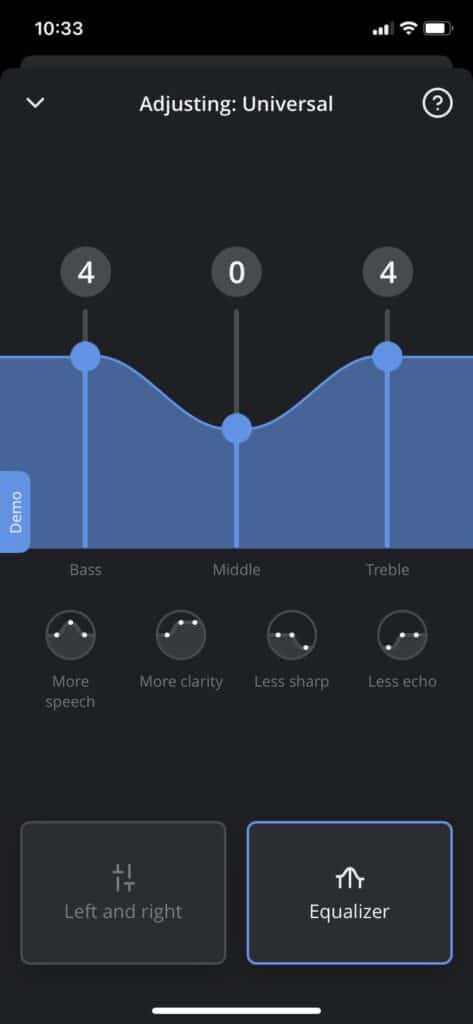This blog entry is written for the hearing aid consumer (but also the audiologist…) who wants to try a few things on their hearing aid app that connects with their smartphone.
Virtually every hearing aid manufacturer in the world supplies an app for a Smartphone that the hard of hearing person can use to “fine tune” some elements of the hearing aid function in some environments. These range from equalizations in different frequency regions to volume control settings, and even some rudimentary artificial intelligence algorithms.
But apps cannot be used to control the maximum output or the many elements of the compression system. And this is a good thing. While changes in overall volume and perhaps a slight change in bass and treble response can be quite useful, changes in the maximum output- which may also be related to compression- may allow the hearing aid to generate sound levels that are potentially damaging to one’s hearing.
The most important element in any hearing aid fitting is the verification stage where a small miniature “probe” microphone is placed in the ear canal along side the hearing aid. These measurements insure that not only is the speech and music at a sufficiently loud enough level, but more importantly, is not too loud.
Limitations of Smartphone Apps for Hearing Aids
Yet, even with these caveats and “well-thought-out-limitations” of smartphone apps, there are a few things that can be done as mini-experiments which your audiologist had not considered.
For this we need to go back to an article by Margaret (Margo) Skinner and Joseph Miller in 1983. This was an extension of Margo’s PhD thesis where she found that one cannot simply increase the bandwidth for the treble notes without ALSO increasing the lower bass notes. Simply increasing the bandwidth and amplification for a higher frequency region may have some benefits for clarity but the sound will appear to be “tinny” or harsh.
One needs to be able to balance the high frequency (right hand side of the piano) with the lower frequency (middle and left side of the piano) sound … at least for speech.

The equivalent study has not been performed for music…
The equivalent study has never been performed for music, but one can use the hearing aid app to do an experiment for yourself. While listening to music try increasing the treble notes with the equalizer on the app …. And then try this same thing but also increase the bass notes on the app so that the equalizer has a U-shape (or equivalently, a dip in the middle).
You may need to reduce the overall volume of the volume control when doing this experiment.
If music is like speech- the Skinner and Miller result is valid for music as well as speech- then this U-shaped equalization on your hearing aid smartphone app may improve the quality of the music that you play and listen to… or not; but its worth a try!
For the intrepid AuD audiology student who is looking for a Capstone study to work on, this may be one idea to consider.







That is not a control that you have access to unless your audiologist has used software to make a special program that will cut out certain notes